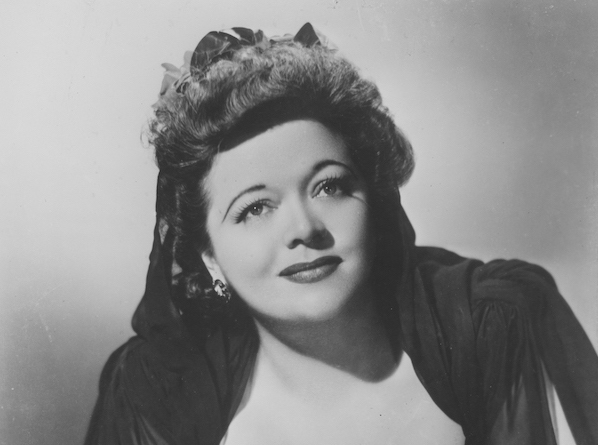Dec 9, 2025 12:28 PM
In Memoriam: Gordon Goodwin, 1954–2025
Gordon Goodwin, an award-winning saxophonist, pianist, bandleader, composer and arranger, died Dec. 8 in Los Angeles.…

DownBeat Archives/Bruno of Hollywood
(Photo: Mildred Bailey (1907–’51))Pianist Teddy Wilson, whose partnership with Billie Holiday in the 1930s bequeathed us one of the great collective canons of jazz history, once told me a surprising thing.
“Mildred Bailey,” he said, “was a much better singer than Billie.” Coming from a man who collaborated with both artists, it carried authority.
So, why is it that today the name Mildred Bailey is unknown to so many? Holiday was voted into the DownBeat Hall of Fame via the Readers Poll in 1961; Bailey gains admission this year via the Veterans Committee. The two singers share many links. Both were influenced by Bessie Smith. Each recorded more than 200 sides for Vocalion and Brunswick in the ’30s and ’40s. They shared the same accompanist and producer—Wilson and John Hammond—and worked with many of the greatest jazz musicians of their time. Each was venerated by other vocalists. Also, each died poor, in their mid-40s.
The two singers, however, faced drastically different demons and obstacles. For Holiday, it was drugs and racism; for Bailey, it was food and diabetes. She struggled with obesity, but she was gifted with a musician’s ear for rhythmic amendment and could produce a sunny, optimistic timbre that shivered with gentle, shimmering vibrato on high notes.
In July 1938, she explained to DownBeat how she developed her vocal style. “Sheet music was hard to get,” she said, “and a tune had to be [memorized] from a recording. I could never get the exact notes of a song, so I used to scheme out the best way to sing it smoothly. Sometimes I would think how a tune might have been improvised if the composer had changed certain parts ... and I would try singing it in my own way. It sort of stuck this way through the years, and before I could straighten myself out ... I found out they were calling this swing and liking it.”
Mildred Rinker was born in Tekoa, Washington, and grew up on the Coeur d’Alene Reservation in northwest Idaho. She married and divorced Ted Bailey, but kept his surname.
When she joined Paul Whiteman in 1929, she became one of the first women to sing with a big band. Bailey and her second husband, vibraphonist Red Norvo, became a popular celebrity couple, known affectionately as “Mr. and Mrs. Swing.” Between 1937 and ’47, she had three DownBeat cover stories. Holiday had none.
Bailey’s hits included “Please Be Kind” and “Says My Heart” (both collaborations with Norvo), “Darn That Dream” (with Benny Goodman & His Orchestra), “Small Fry,” “Trust In Me,” “Never In A Million Years” and her signature song, “Rockin’ Chair.”
Alas, the music industry has canonized Holiday yet largely forgotten Bailey. Holiday has eight recordings in the Grammy Hall of Fame; Bailey has one. Bailey belongs to the realm of history now, where recognition can be tardy but never too late. DB
This story originally was published in the August 2020 issue of DownBeat. Subscribe here.

Goodwin was one of the most acclaimed, successful and influential jazz musicians of his generation.
Dec 9, 2025 12:28 PM
Gordon Goodwin, an award-winning saxophonist, pianist, bandleader, composer and arranger, died Dec. 8 in Los Angeles.…

Flea has returned to his first instrument — the trumpet — and assembled a dream band of jazz musicians to record a new album.
Dec 2, 2025 2:01 AM
After a nearly five-decade career as one of his generation’s defining rock bassists, Flea has returned to his first…

Belá Fleck during an interview with Fredrika Whitfield on CNN.
Jan 13, 2026 2:09 PM
The fallout from the renaming of the John F. Kennedy Center for the Performing Arts to include President Donald…

“It’s a pleasure and an honor to interpret the music of Oscar Peterson in his native city,” said Jim Doxas in regard to celebrating the Canadian legend. “He traveled the world, but never forgot Montreal.”
Nov 18, 2025 12:16 PM
In the pantheon of jazz luminaries, few shine as brightly, or swing as hard, as Oscar Peterson. A century ago, a…

Dec 11, 2025 11:00 AM
DownBeat presents a complete list of the 4-, 4½- and 5-star albums from 2025 in one convenient package. It’s a great…